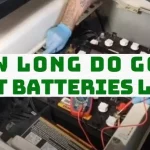As any avid golfer knows, being able to consistently hit solid, accurate iron shots is crucial to playing your best golf. Whether you’re trying to stick it close on a par 3, punch out from the trees, or hit a precise approach shot into the green, your iron play is a fundamental part of your game.
However, hitting crisp, powerful iron shots can be one of the most challenging aspects of golf, especially for newer or high-handicap players. Thin, fat, or shanked iron shots can be incredibly frustrating and ruin an otherwise good round. That’s why it’s so important to master the fundamentals of iron play and develop a consistent, repeatable swing technique.
In this comprehensive guide, we’ll cover everything you need to know about how to hit the golf ball solidly and consistently with your irons. We’ll discuss proper setup, swing mechanics, impact position, and troubleshooting common iron shot problems. By the end, you’ll have the knowledge and skills to start hitting crisper, longer, and more accurate iron shots every time you step up to the ball.
Key Fundamentals of Iron Play
Before we dive into the specifics of the iron swing, it’s important to establish a solid foundation of the core fundamentals that will serve as the building blocks for consistent iron play. These include:
-
Proper Posture and Grip
Good posture and grip are essential for being able to make a smooth, powerful swing with your irons. Start by standing with your feet about shoulder-width apart, knees slightly bent, and your weight evenly distributed. Keep your back straight and your head still throughout the swing.
As for your grip, the ideal position is to have your dominant hand (usually your right hand for right-handed golfers) slightly in front of the clubhead at address. Your grip pressure should be firm but relaxed, allowing you to freely hinge your wrists during the swing.
-
Ball Position
The position of the golf ball in your stance is crucial for making solid, consistent contact with your irons. For most iron shots, you’ll want to position the ball just inside of center in your stance, around the middle of your chest. This will encourage a slightly descending blow and help you make clean, crisp contact.
However, you may want to adjust the ball position slightly depending on the specific shot. For example, playing the ball a bit further back in your stance can help you launch the ball higher, while moving it slightly forward can produce a lower, more penetrating ball flight.
-
Weight Transfer and Rotation
Proper weight transfer and rotation are key components of an effective iron swing. At address, your weight should be evenly distributed between your feet. As you start your backswing, shift your weight to your right foot (for right-handed golfers) and turn your hips and shoulders away from the target.
On the downswing, smoothly transfer your weight back to your left foot, allowing your hips and torso to rotate through the shot. This weight shift and rotation is what generates the power and clubhead speed needed for solid iron strikes.
How to Hit Down on the Golf Ball With Irons
One of the most important aspects of making clean, consistent contact with your irons is learning to hit down on the golf ball. This descending blow is what creates the crisp, penetrating ball flight that is the hallmark of great iron play.
To achieve this downward strike, focus on the following key elements:
-
Posture and Ball Position
As mentioned earlier, having the ball positioned just inside of center in your stance is crucial. This ball position will encourage you to hit down and through the ball, rather than sweeping up on it.
Additionally, maintaining a slightly forward shaft lean at address, with your hands ahead of the clubhead, will help promote that descending blow. This forward shaft tilt should be maintained throughout the swing.
-
Swing Plane and Club Path
To hit down on the ball, you’ll want to shallow out your swing plane on the downswing and approach the ball on a slightly inside-to-out club path. Avoid taking the club too far inside or coming over the top, as this can lead to an upward, sweeping strike.
Focus on keeping your hands and arms relaxed and allowing the club to work naturally along that ideal inside-to-out path as you swing down and through the ball.
-
Hitting the Ball First, Then the Turf
A key checkpoint in the downswing is making sure you hit the ball first, before taking any turf. This means you’ll want to feel like you’re striking down and through the ball, rather than scooping or trying to lift it.
Imagine making a small divot just in front of the ball – this descending strike is what produces those crisp, penetrating iron shots.
How to Hit Irons Consistently
Consistency is the holy grail for any golfer, and it’s especially true when it comes to your iron play. Here are some tips to help you develop a more repeatable, consistent iron swing:
-
Develop a Consistent Tempo
One of the biggest keys to hitting irons consistently is maintaining a smooth, rhythmic tempo throughout your swing. Avoid the common tendency to rush or decelerate on the downswing, which can lead to inconsistent contact.
Instead, focus on taking the club back at a measured pace, and then allowing the club to smoothly accelerate down into the ball. Keeping your tempo consistent will help you make solid, centered contact time after time.
-
Commit to Your Swing
Another crucial element of consistency is committing fully to your swing and swing path. Golfers who are tentative or indecisive with their swing often struggle to make consistently good contact.
When you step up to the ball, be decisive about your target, your swing path, and your swing mechanics. Commit to the shot and trust that your swing will produce the desired result.
-
Develop a Consistent Routine
Establishing a consistent pre-shot routine can also pay big dividends in terms of iron consistency. This could include things like your stance, your grip, your waggle, your visualization, and your swing trigger.
The more you can ingrain this consistent routine, the more your body and mind will be primed to execute the swing you’ve practiced.
-
Practice, Practice, Practice
Of course, the single most important factor in hitting irons consistently is good, old-fashioned practice. The more reps you can get with your irons, the more your swing mechanics will become second nature.
Spend time on the driving range, hitting shot after shot with your various irons. Pay attention to your contact, ball flight, and overall consistency. Over time, your iron play will become more and more reliable.
How to Hit a Golf Ball Higher With Long Irons
While the fundamentals of iron play we’ve covered so far apply to all your irons, there are some specific techniques you can use to hit your long irons (3-iron, 4-iron, 5-iron) higher and more consistently.
-
Adjust Your Ball Position
To launch your long irons higher, you’ll want to position the ball slightly further back in your stance, around the center or just inside of center. This encourages a slightly more upward strike on the ball, helping to get it airborne.
-
Tee the Ball Up Slightly
You can also try teeing the ball up just a fraction of an inch off the ground when using your long irons. This small adjustment can make it easier to make clean, ascending contact and produce a higher, more penetrating ball flight.
-
Increase Your Loft at Impact
Another key to hitting higher long iron shots is increasing the loft of the club at impact. To do this, focus on maintaining your spine angle and keeping your hands slightly ahead of the clubhead through impact.
This forward shaft lean and delofted impact position will help launch the ball higher with your long irons.
-
Swing a Bit Easier
Finally, consider swinging your long irons with a slightly more controlled, tempered tempo. Trying to swing your 3-iron or 4-iron as hard as your 7-iron can sometimes lead to thin, low-launching shots.
By swinging a bit easier and focusing on solid contact, you can maximize your long iron trajectory and carry distance.
Troubleshooting Common Iron Shot Problems
Even the best golfers in the world struggle with inconsistent iron play from time to time. Here are some common iron shot problems and how to fix them:
Thin Shots
Thin shots, where you catch the ball on the upper part of the clubface, are often caused by an overly steep or “scooping” swing. Focus on maintaining your spine angle and hitting down on the ball to cure this issue.
Fat Shots
Fat shots, where you hit the ground behind the ball, are usually the result of a swing that is too shallow or a ball position that is too far back in your stance. Make sure to keep the ball position just inside of center and focus on that descending blow.
Shanks
The dreaded shank, where the ball comes off the hosel of the club, is one of the most frustrating problems in golf. This is typically caused by an overly open clubface at impact or an excessively narrow stance. Widen your stance and focus on squaring the clubface at impact.
Slices
Slice shots, where the ball curves dramatically to the right (for right-handed golfers), are often the result of an outside-to-in swing path and an open clubface. Work on keeping your swing path more inside-to-out and closing the clubface through impact.
Hooks
On the flip side, hooks, where the ball curves severely to the left, are usually caused by an excessively closed clubface and an overly steep, inside-out swing path. Focus on keeping your clubface more open and your swing path more neutral.
By understanding the causes of these common iron shot problems, you can make the necessary adjustments to your setup, swing mechanics, and ball position to start hitting crisper, more consistent iron shots.
Frequently Asked Questions (FAQ)
-
Should You Hit down On An Iron Shot?
Many golfers get confused about whether they will be hitting down and through an iron shot or collecting it from the turf. They should mind that this is the best option to hit and through the iron shot. When you make a hit on the ball, you’ll surely get a better flight and spin. It is necessary to get a better result from the game.
If you don’t hit down the ball, there’s a possibility that the ball won’t go to the proper distance. It will surely make you disappointed. The actual matter is they don’t shrink properly. As a result, you will lose the clear-cut distance and it will ultimately have a negative influence on your game. So, you should be aware of it.
-
Do One Length Irons Make Setup Easier?
Before the game, there’s another challenge for you and it is setting an iron. Setting up with an iron is a complicated matter at all. It generally changes. For instance, if you have a seven iron, it won’t work in the same way as nine iron. This could be a hard thing for you.
If you possess irons of the same length, you can short down the iron without any hassle. Nowadays, one-length irons are becoming more popular among golfers.
-
Should I Hit the Ball or Ground First With an Iron?
Firstly, you need to strike the golf ball on a fairly descending path. After that, hit the turf.
-
Why am I Hitting The Ground First With My Irons?
As a rule, a thin or fat shot is brought about by having your swing place excessively far behind the ball at sway. This mistake makes your club base out excessively far behind the ball and will make you hit the ground initially (a fat shot) or hit the ball’s highest point (a slight shot).
Conclusion
Mastering your iron play is one of the most rewarding and important skills you can develop as a golfer. By focusing on the fundamentals of good iron swing mechanics, you can start hitting the ball more solidly, consistently, and with greater control.
Remember the key points we’ve covered in this guide:
- Establish a proper setup with good posture, grip, and ball position
- Learn to hit down on the ball and make clean, descending contact
- Develop a consistent tempo and swing routine for more reliability
- Use specific techniques to launch your long irons higher
- Troubleshoot and fix common iron shot problems
With dedicated practice and a commitment to improving your iron play, you’ll start seeing your scores drop and your overall game improve. So get out there, put these tips into practice, and enjoy the satisfaction of hitting pure, powerful iron shots time and time again.
If you have any queries regarding the article, feel free to ask below.





